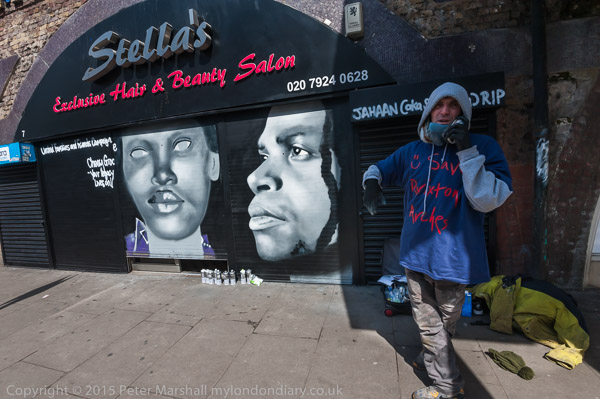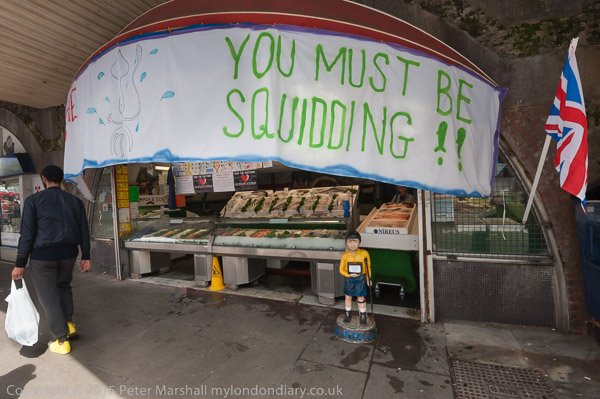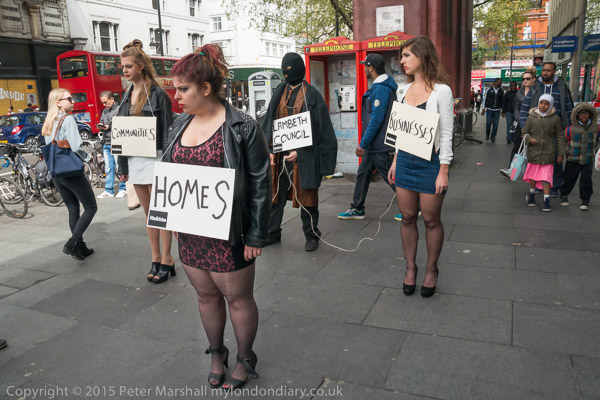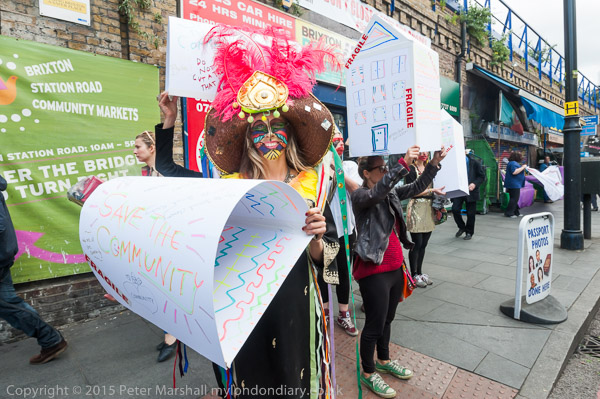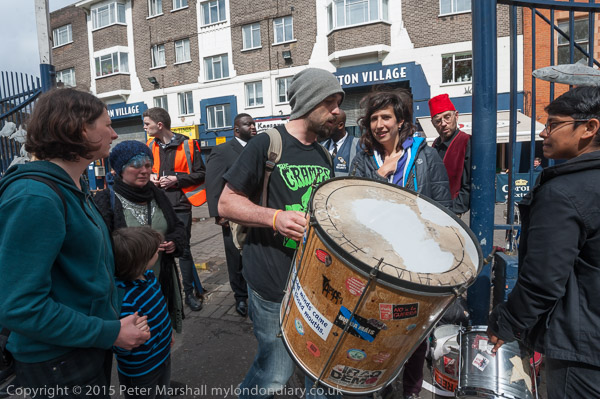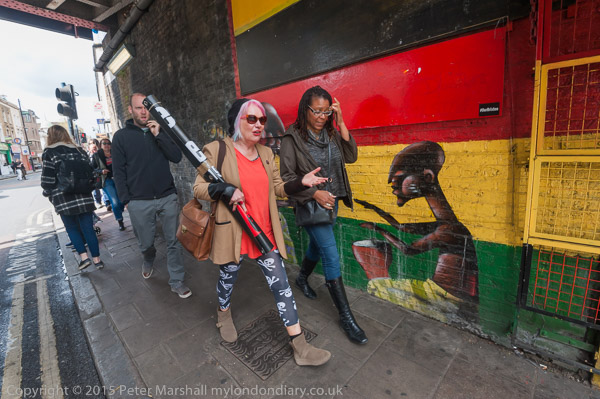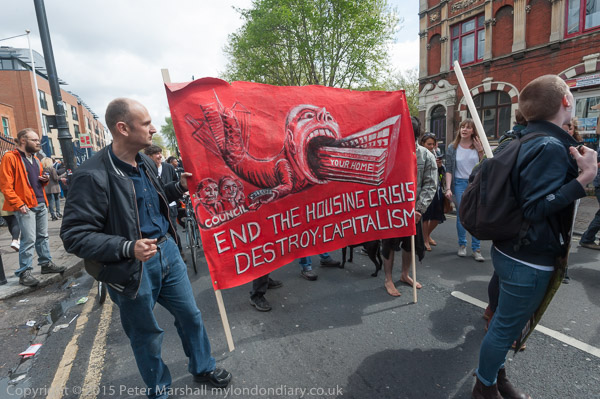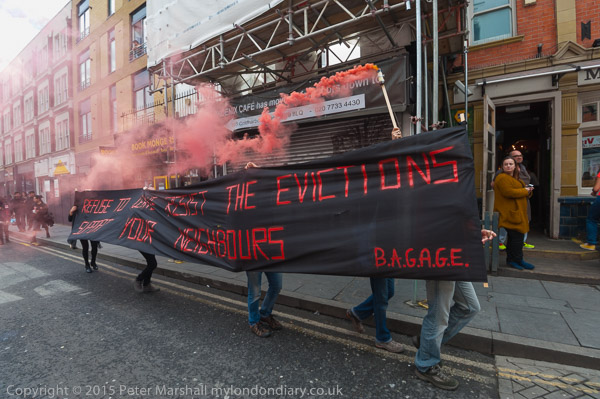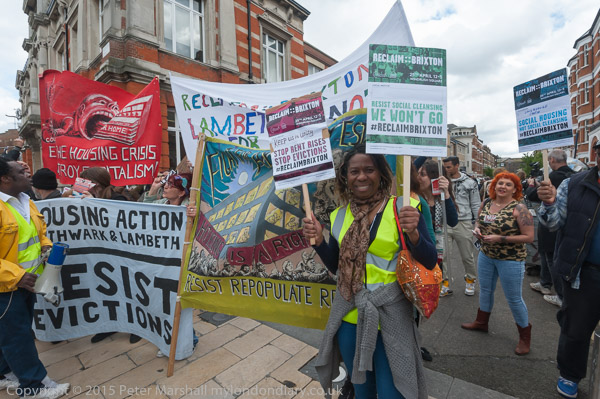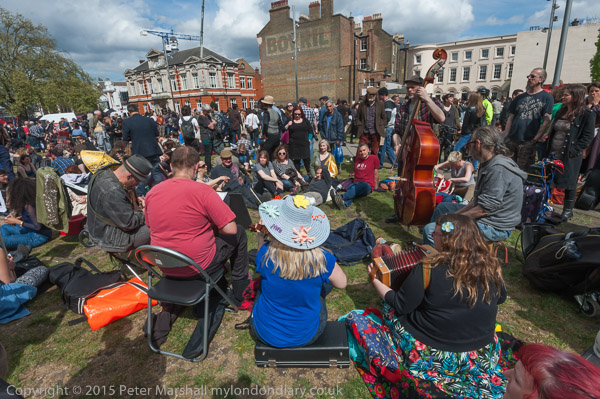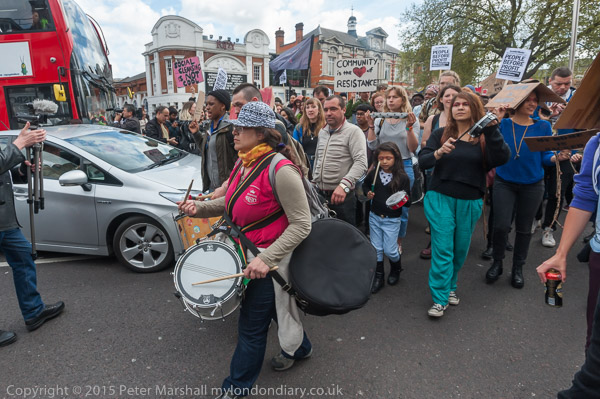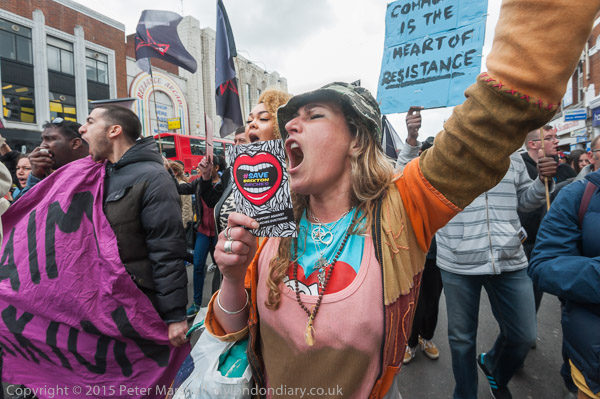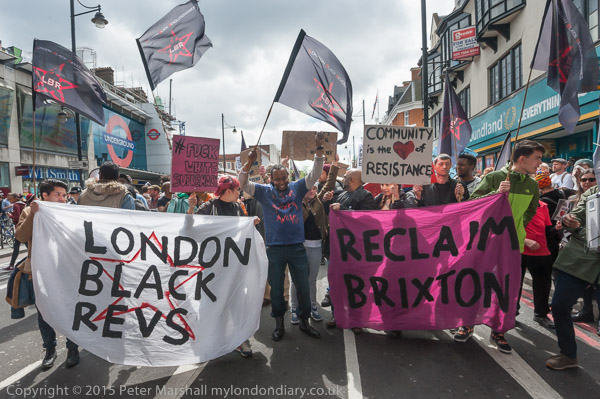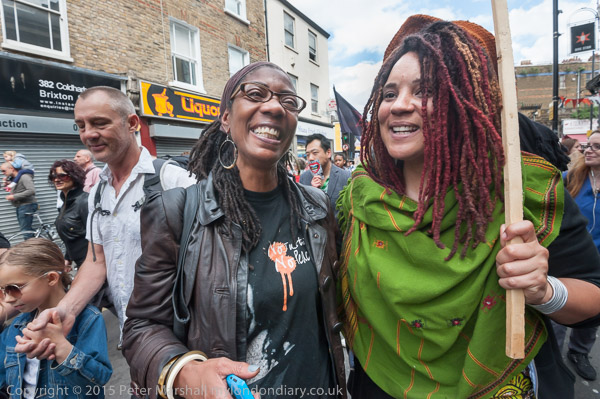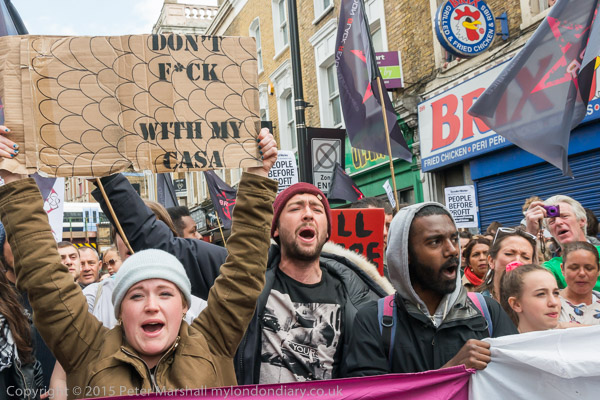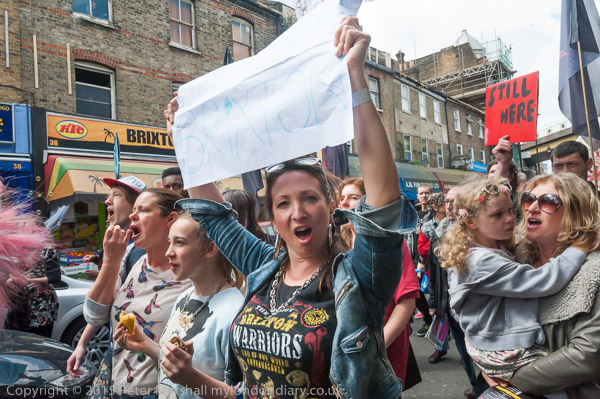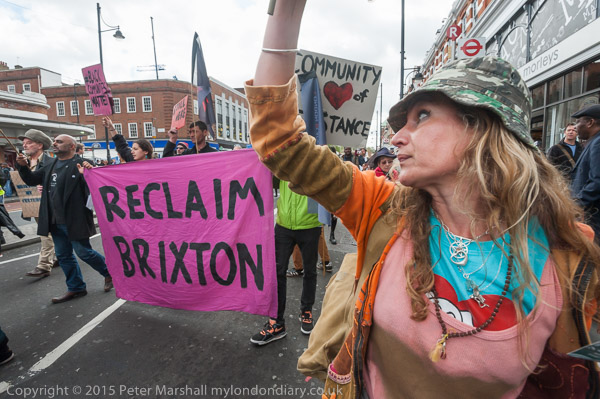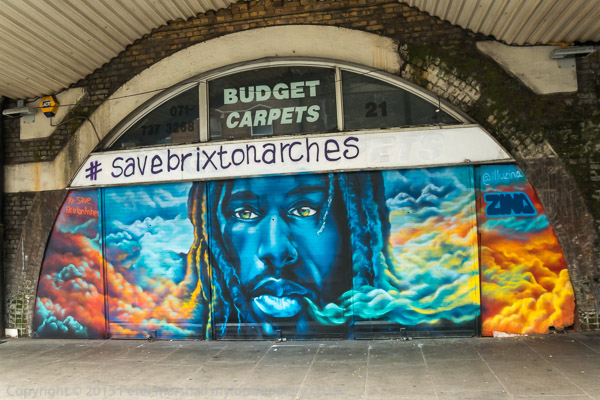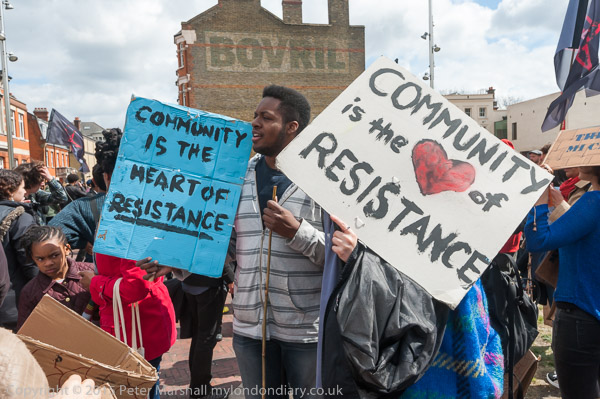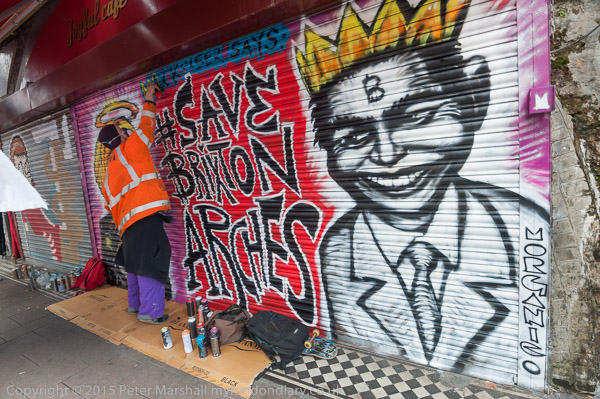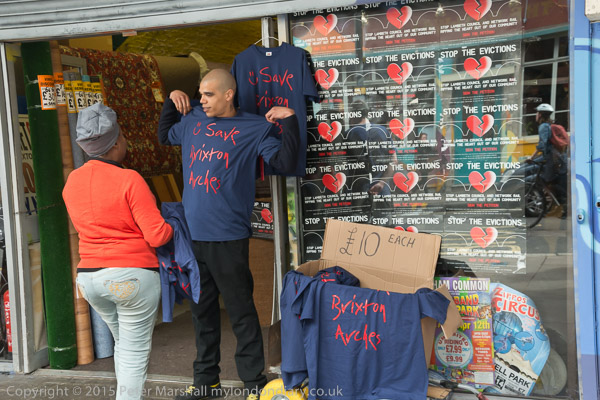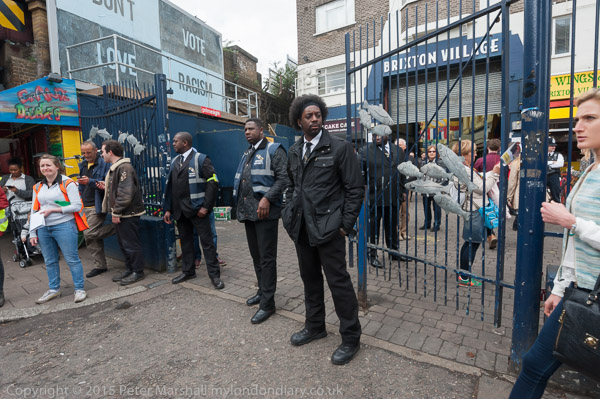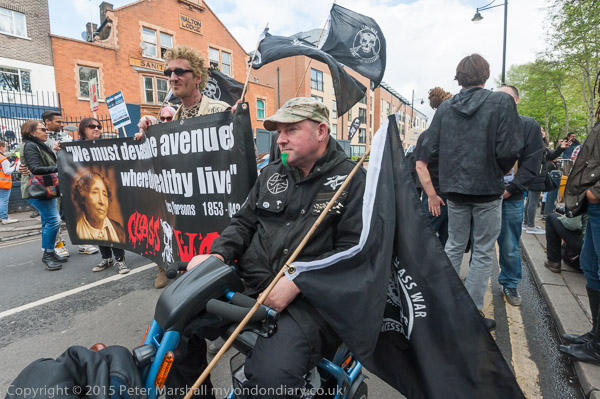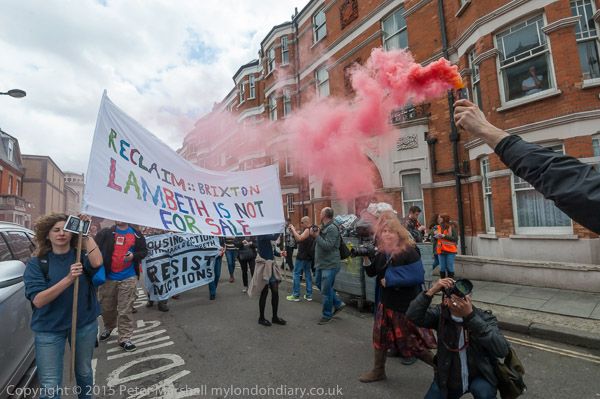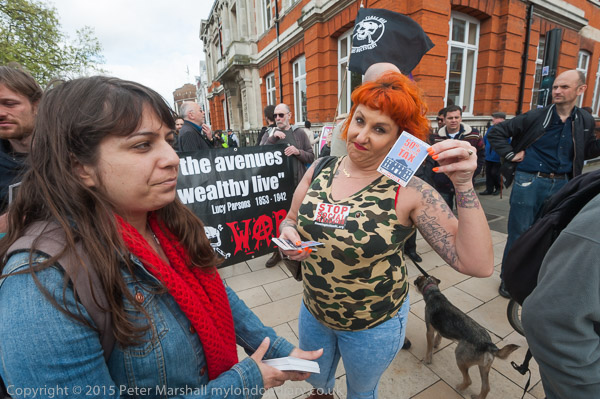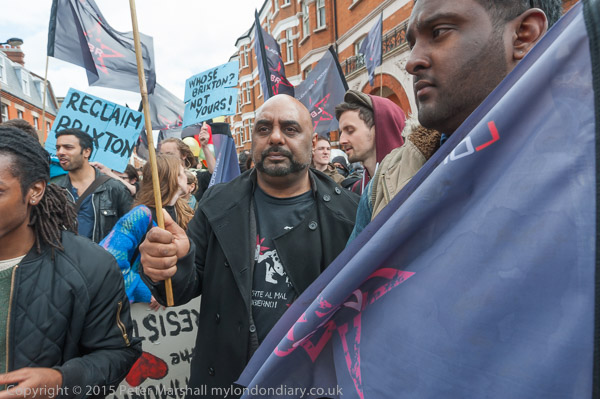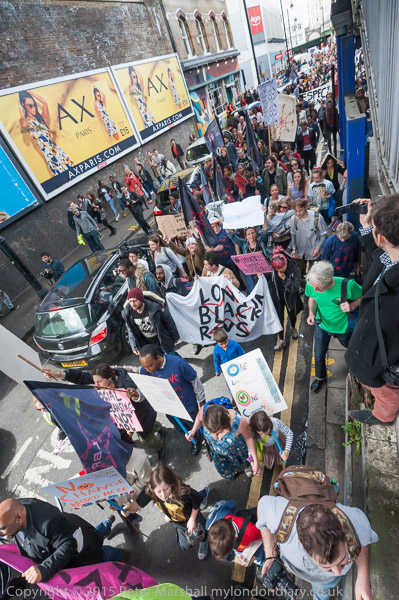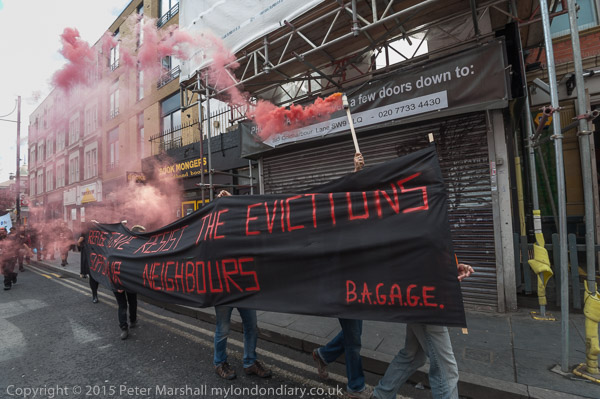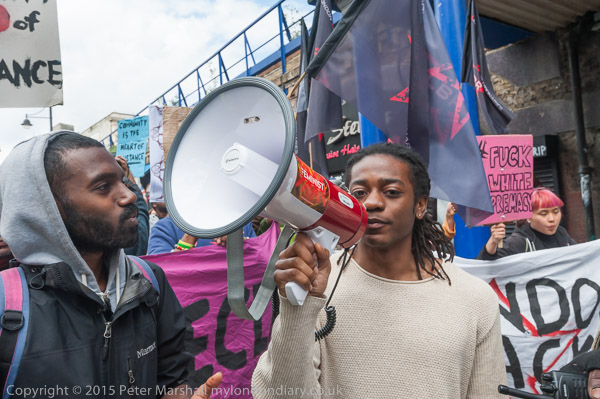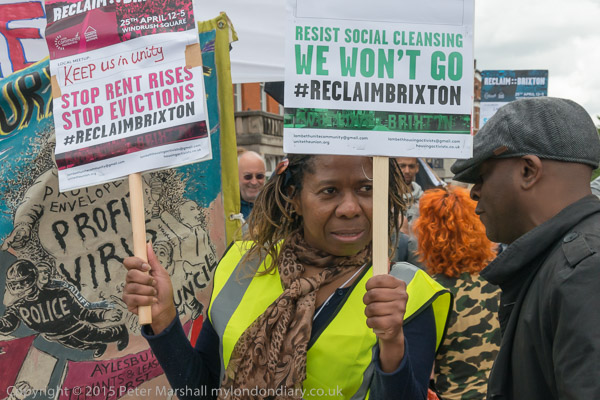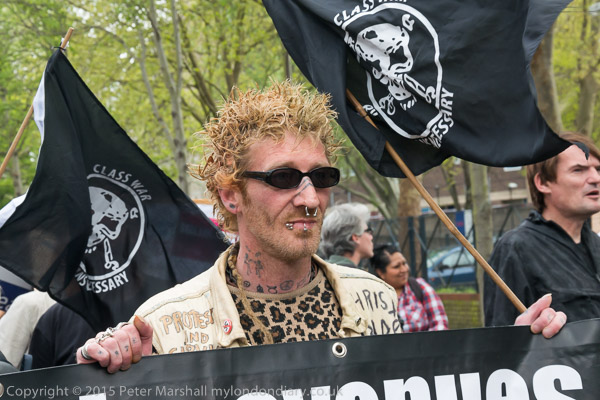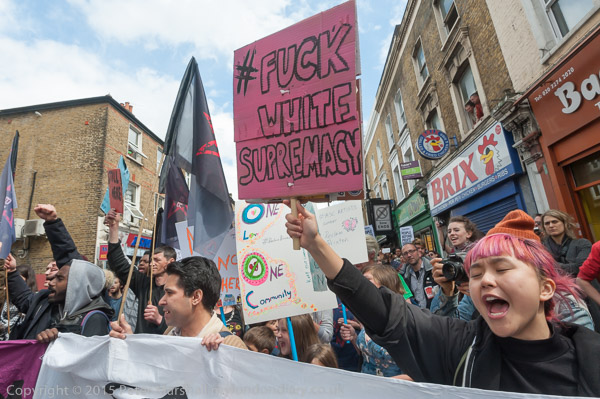Baltimore to Brixton – Black Lives Matter! The hashtag #BlackLivesMatter was first used on Twitter on 12th July 2013 but only became common in 2014 after the killings of Eric Garner, Michael Brown and Tamir Rice in 2014, reaching a peak when it was announced nobody wold be prosecuted over the killing of Michael Brown in Ferguson. According to a list published by Twitter on the tenth anniversary of the platform in 2016 #BlackLivesMatter was the third most used hashtag in those ten years, beaten by #Ferguson at number one and #LoveWins, celebrating the US Supreme Court’s ruling on gay marriage.
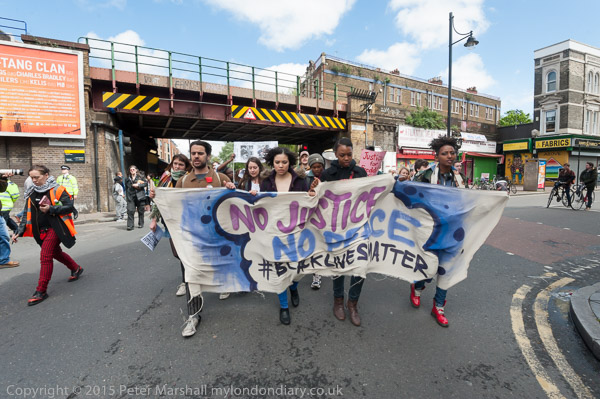
Of course the UK has its own cases of people, especially but not only black who have been killed by police and otherwise in custody and an annual march takes place in Whitehall on the last Saturday of October by the United Families and Friends Campaign to remembers them, with a list of over 2000 names being carried to a rally at Downing Street.

The United Families and Friends Campaign (UFFC) describes itself as “a coalition of families and friends of those that have died in the custody of police and prison officers as well as those who are killed in immigration detention and secure psychiatric hospitals. It includes the families of Roger Sylvester, Leon Patterson, Rocky Bennett, Alton Manning, Christopher Alder, Brian Douglas, Joy Gardner, Aseta Simms, Ricky Bishop, Paul Jemmott, Harry Stanley, Glenn Howard, Mikey Powell, Jason McPherson, Lloyd Butler, Azelle Rodney, Sean Rigg, Habib Ullah, Olaseni Lewis, David Emmanuel (aka Smiley Culture), Kingsley Burrell, Demetre Fraser, Mark Duggan and Anthony Grainger to name but a few. Together we have built a network for collective action to end deaths in custody.”
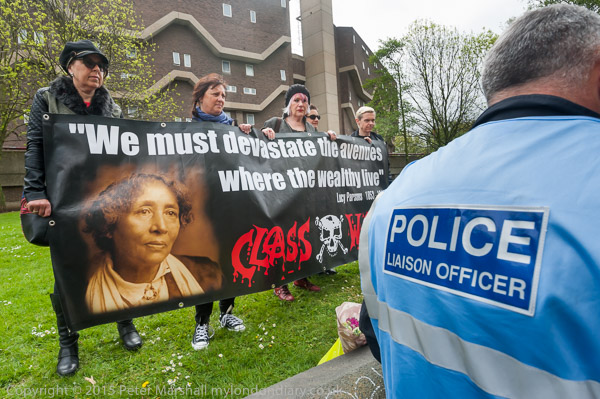
And we have a long history of racist prosecutions, most notably perhaps the trial of the Mangrove Nine in 1970. The defendants, most of whom defended themselves, were finally all acquitted on the main charge of incitement to riot with four receiving suspended sentences for less serious offences. But the judge made clear in his comments that the authorities and in particular the Metropolitan Police had been racist in their actions and in bringing the prosecution.
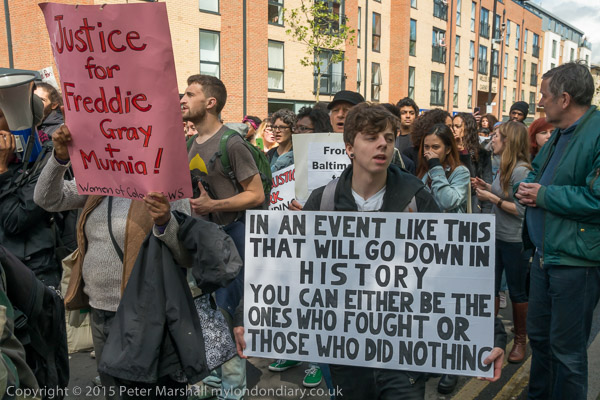
Since then there have been other high profile cases which have demonstrated the institutional racism of the police force – notably over their investigation of the murder of Stephen Lawrence and the police murder of Jean Charles de Menezes. In 2023 the report by Baroness Casey was only the latest to castigate them as racist, sexist and homophobic.

Activists in the UK have also responded to the police murders in USA, and on Sunday 3rd May 2015 following the killing of Freddie Gray in Baltimore and police attacks on his funeral which led to massive protest in the USA, they protested in Brixton in solidarity and pointed out similar problems in Brixton and the UK.

It wasn’t a huge protest but was supported by a wide range of groups from Brixton and across London, including London Black Revs, Class War, the International People’s Democratic Uhuru Movement, Reclaim Brixton, Women of Colour and the All-African Women’s Group from the Global Women’s Strike, Brixton Latin American Community, Mexica Movement London Chapter, Our Brixton, Latin Brixton, Justice for Christopher Alder, BirminghamStrong, Justice 4 ALL, The Brick Lane Debates, Occupy UAL, RCG, Revolutionary Communist Group, Occupy London, Rojava Solidarity Working Group, Algeria Solidarity Campaign, Environmental Justice North Africa and Justice4Paps.

On My London Diary I give some brief facts about the killing of 25-year-old African American Freddie Gray and the attack on his funeral by police which provoked riots. You can read a much more detailed account on Wikipedia.

The march began by going through the large barrier bloc of Southwyck House, built in the 1970s as a shield for the urban motorway, plans for which were dropped after the devastation it would cause became obvious after the Westway section was built in North Kensington, stopping for a brief protest there before it continued to a housing occupation against Guinness Trust opposite the Loughborough Park Estate. It then through the centre of Brixton to a rally in Windrush Square.

People then marched along Brixton Road past the Underground Station to Brixton Police Station and on to the Loughborough Estate to a community centre on Somerleyton Road.

I’d walked far enough and left the march there, walking back along Atlantic Road where I photographed some of the murals against the eviction of local shopkeepers from the railway arches before taking the tube to Westminster to go to visit the Occupy ‘Festival of Democracy‘ in Parliament Square, then in Day 3.
More pictures at Baltimore to Brixton – Black Lives Matter!
Flickr – Facebook – My London Diary – Hull Photos – Lea Valley – Paris
London’s Industrial Heritage – London Photos
All photographs on this page are copyright © Peter Marshall.
Contact me to buy prints or licence to reproduce.
